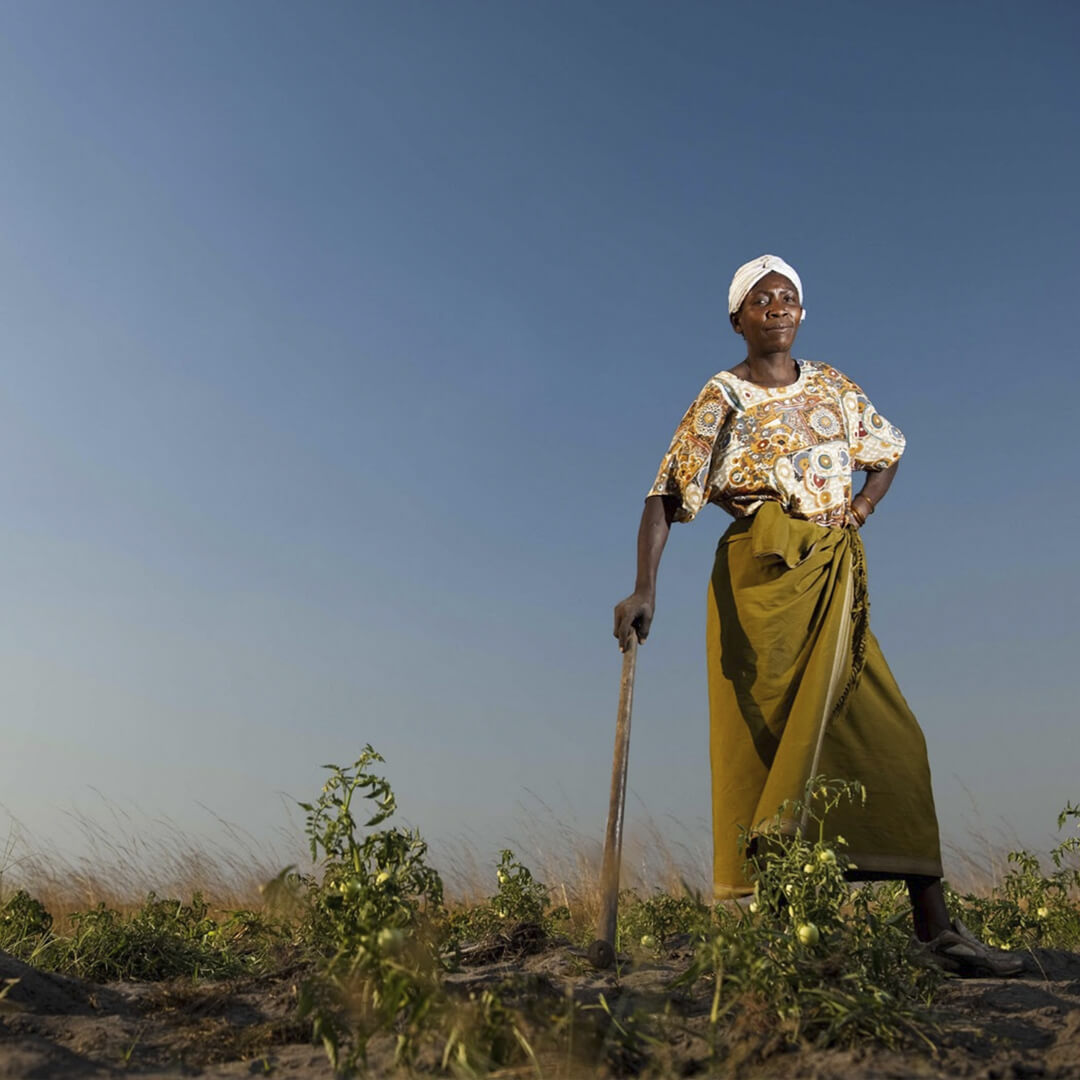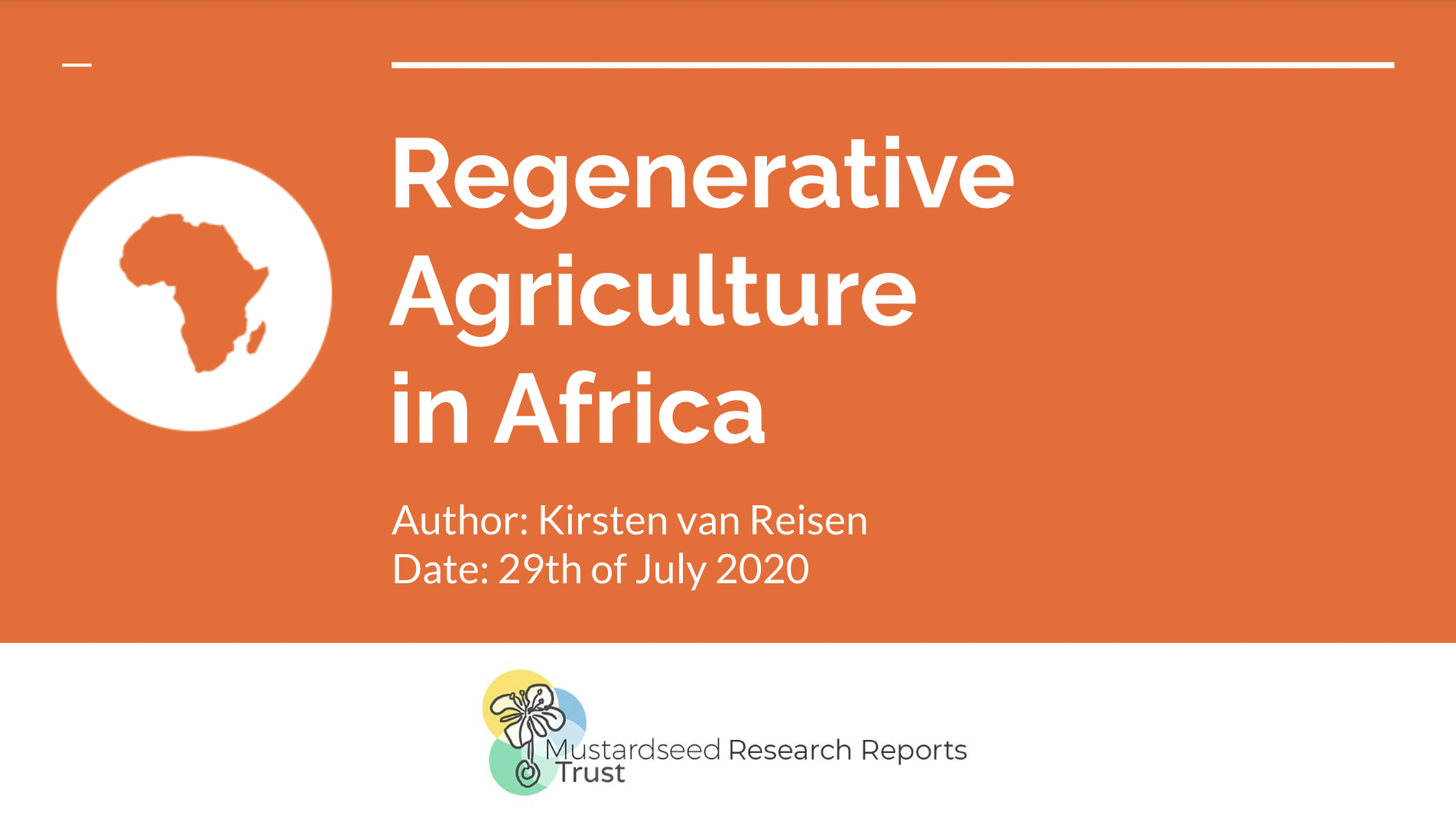Aug 31, 2020
Research mapping: regenerative agriculture in Africa
To learn more about regenerative agriculture, or ‘regenag’ or ‘RA’ for short, particularly in regions that are less reported upon, we felt a need to do some mapping to understand the latest insights and developments. These findings serve as a starting point for conversations with key actors in the field.

Our research question was formed as follows:
What are the actors and factors to either enhance or inhibit a shift in thinking and practice to regenerative agriculture in Africa?
This led to the following research report:
RA (f)actors in Africa by Kirsten van Reisen

RA (f)actors in Africa by Kirsten van Reisen
Kirsten van Reisen is an ‘impact researcher’ and consultant with extensive experience in planning, monitoring, evaluation and learning (PMEL) and sustainability for the public sector, private sector and international NGO sector. She has a personal interest in regenerative agriculture and has spent time working on RA farms.
What’s in this report?
Kirsten van Reisen’s report gives us an insight into regenerative agriculture on the African continent.
There are many terms in circulation used in relation to what regenerative agriculture means, with varying objectives. Some are more or less related to food production, community engagement or nature restoration. Kirsten starts by giving us a breakdown of the various principles of regenerative agriculture, including a description of common terms related to Regenerative Agriculture, such as Agroforestry, Farmer Managed Natural Restoration, Conservation, Holistic Grazing and Permaculture. The report gives a complete picture of the meaning of regenerative agriculture.
Six factors that have barriers and levers
According to the report, there are six main areas that help or hinder the use of RA within Africa: Political Factors, Economic Factors, Social Factors, Technological, Legal and International Factors. These include the general poor economic conditions for investment in the transition to RA, lack of knowledge of the benefits of RA among policymakers and farmers, and fragmentation of RA actors across the continent. The huge variations in climate across the continent means it is more difficult to apply a one-size-fits-all model. Kirsten determined that we must find solutions in Africa that combine the best of RA and the scaling potential of mainstream farming. In addition, legal uncertainties regarding land ownership and future of tenure are not conducive to making longer-term decisions regarding transitioning to RA. International factors include the presence of too many global players (large-scale actors or ‘Big Ag’) that are heavily investing in the mainstream methods – which focus on selling chemical inputs and GMO seeds to farmers. This practice even happens as part of some NGO initiatives focused on food security.
In general, Kirsten states that only a few African countries have policies in place to help scale regenerative agriculture. In most countries, conventional agriculture and/or imported agricultural products are subsidised and when regenerative agriculture is not considered part of that subsidy framework (for example, when croplands are mixed with non-productive species, in some countries the land loses its agricultural status and therefore subsidies), it puts RA at a disadvantage in terms of growth.
Actors in regenerative agriculture in Africa
To make regenerative agriculture possible at scale, the report states we need a wide range of actors from farm to plate. In fact, the work starts even before the farms, with the scientific community (providing the right inputs and enabling environment), the farm inputs (seeds, seedlings, tools) and the policymakers. Then there are the practitioners: the farmers, network organisations, consultants and finally those who bring RA to the market: business case developers, marketeers, awareness raisers, buyers and distributors.
Kirsten’s report includes country-specific examples of actors: many at government and policy level that are beginning to scale up regenerative agriculture projects. Rwanda and Ethiopia are front-runners in this respect.
Kirsten gives specific examples of actors that are working with farmers or networks helping to scale up RA in Africa.
These include researchers, networkers, engineers, business partners, big permacultures, mainstream attractors, grassroots growers, global buyers, impact investors and social architects. Her presentation of actors under these headings gives a fascinating insight into the very tip of the iceberg of RA in Africa.
In the conclusion to Kirsten’s report, she states that she has concentrated her work on those projects capable of scaling up. The networking organisations, the policy-making space and the connections to knowledge, inputs and markets described within the report are essential to regenerative agriculture’s success.
Recent Posts
The universe below our feet
We are intimately connected to universe below our feet: the soil with which we trade, breathe, and thrive symbiotically.
Mustardseed Trust to wholly redistribute its assets and wind up its charitable operations.
After two decades of charitable grant-making, the time has come to accelerate its giving and enable partners to thrive independently from us.
Money does grow on trees: investing in regenerative agriculture
Our attendance at a 4-day virtual conference back in September in the US: the Regenerative Food System Investment Forum.



